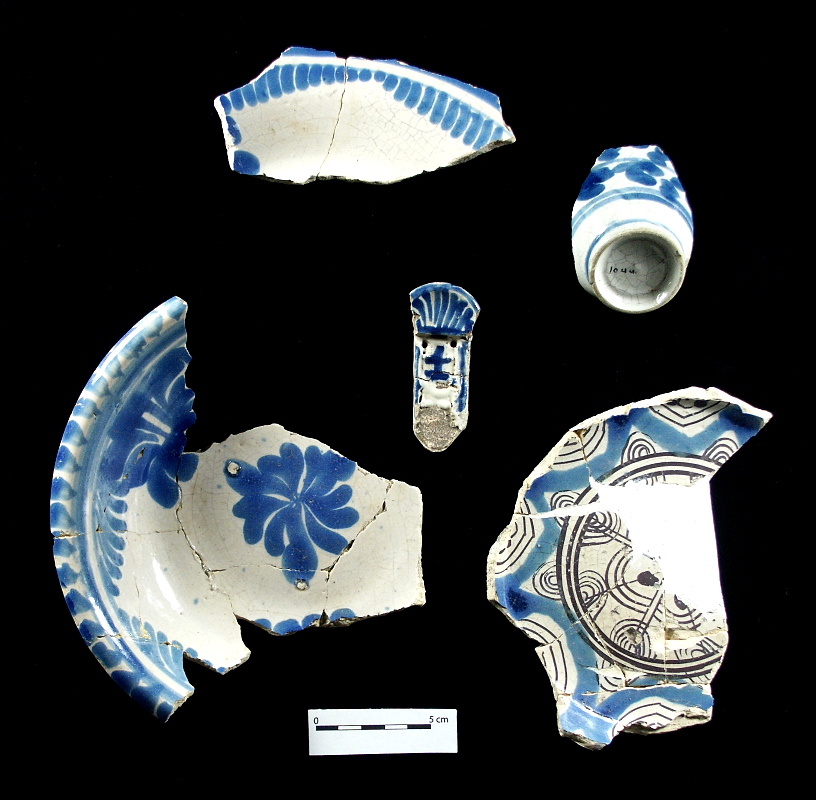
Sherds of the distinctively decorated blue and white Mexican majolica was the most prevalent ceramic type at the site: over 20,000 sherds were found. Most are of the Puebla Blue-on-White type, shown above in the wide bowl rims at top and left, the cup at top right, and the ornamental sherd in the center. A small number were Puebla polychrome in colors of blue, white, black of the dibujo de encaje, or lace design ( lower right). Majolica is a tin-glazed earthenware similar to French faience that was manufactured in great quantities in Mexico during the 17th and 18th centuries and used to supply Spanish outposts, such as presidios, missions, and pueblas, or villages, in New Spain. According to analyst Maureen Brown, pottery and other supplies were sold at the annual marketplace in Saltillo, Mexico, the transported to outposts in Texas by mule train. Typical vessel forms include dishes (platos), bowls (escudillas, wide bowl or large coffee cup), and cups/small bowls (tazas), including the small “chocolate” pocillos (demitasse cups). Photo by Susan Dial. TARL Collections.